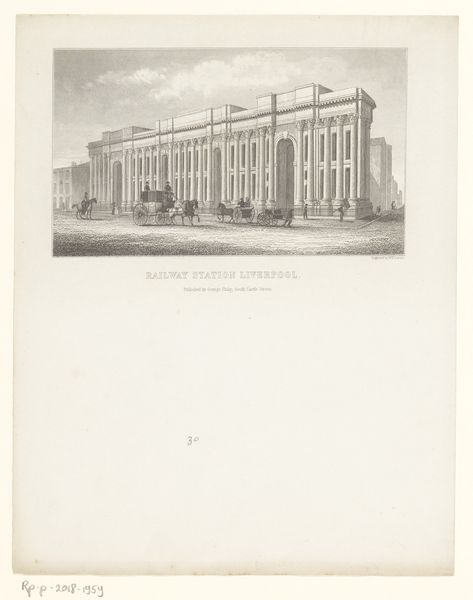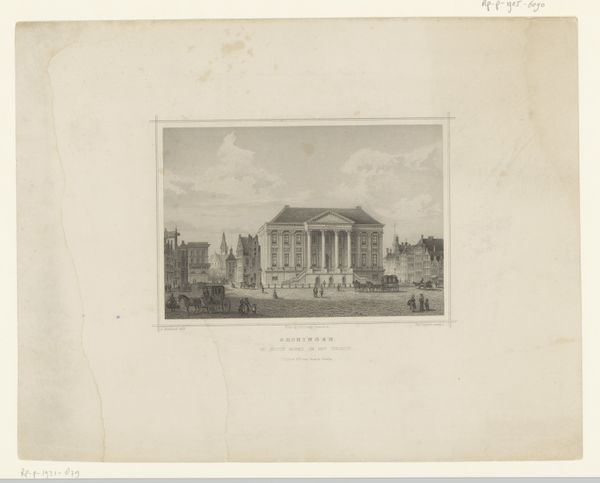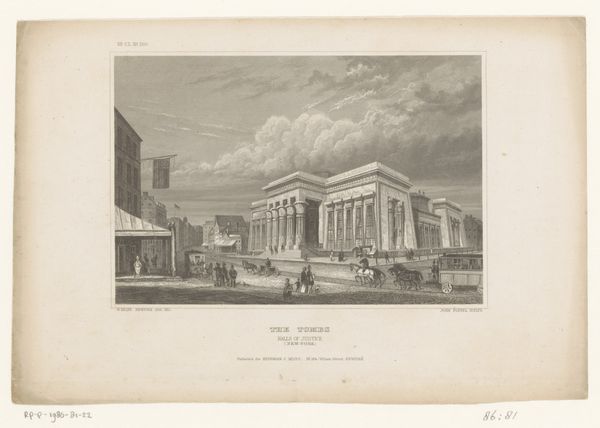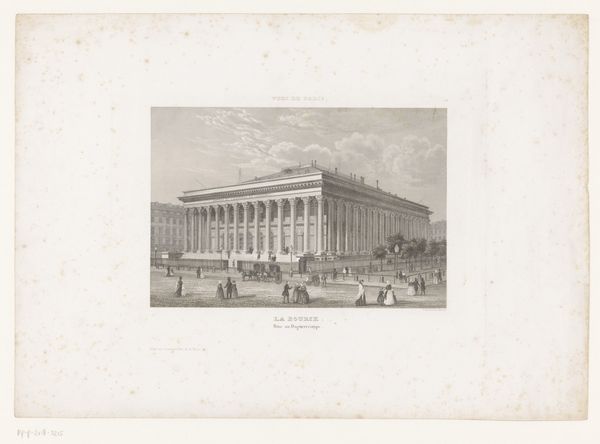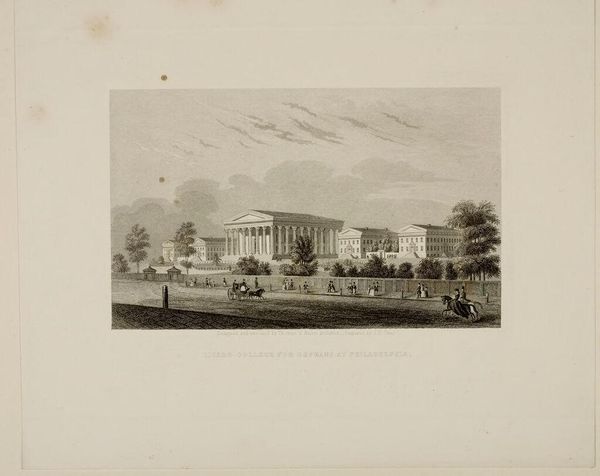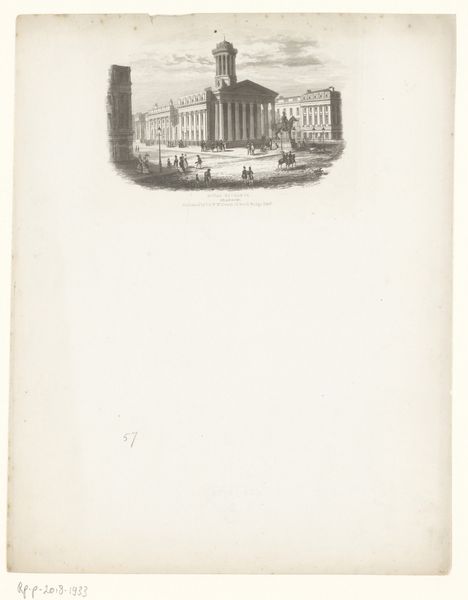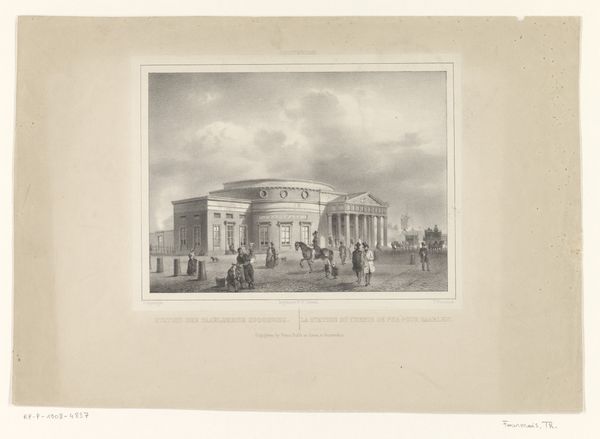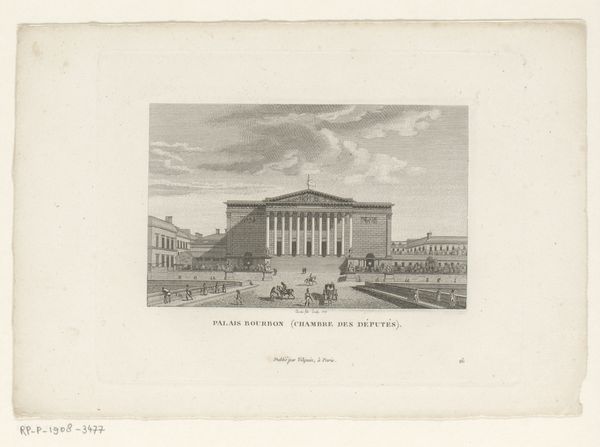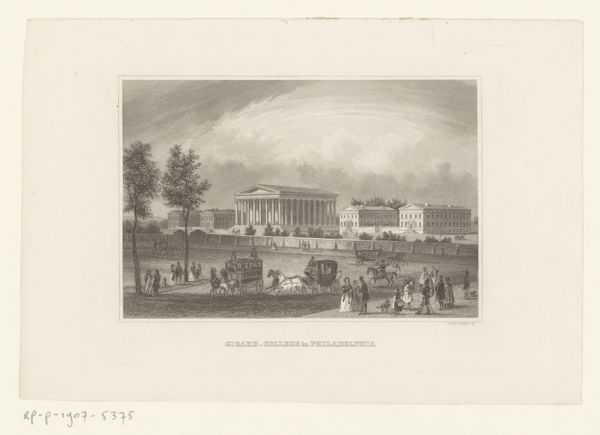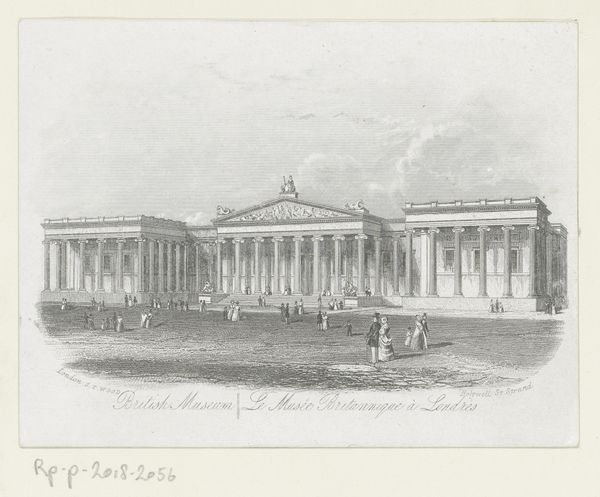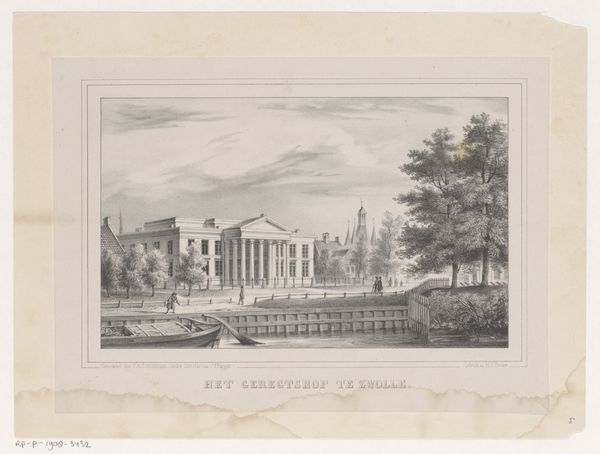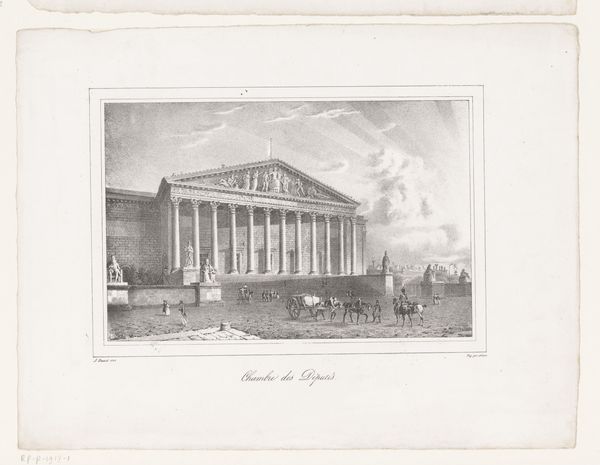
print, engraving, architecture
#
neoclacissism
#
ink paper printed
# print
#
pencil sketch
#
old engraving style
#
pen-ink sketch
#
sketchbook drawing
#
cityscape
#
history-painting
#
engraving
#
architecture
#
realism
Dimensions: height 239 mm, width 190 mm
Copyright: Rijks Museum: Open Domain
Curator: A grand yet subdued vista. Its stark lines seem almost forbidding, don't they? Editor: Indeed. What we have here is "Gezicht op St George's Hall, te Liverpool," an engraving by William Home Lizars, created between 1834 and 1848. Lizars, of course, was known for his detailed prints. The piece exemplifies neoclassical architectural rendering. Curator: The precision of the lines and the uniformity of the columns certainly speak to that neoclassical precision. It also makes me think about the societal role such architecture was intended to play. Look at the slight human presence compared to the massive building: a statement about civic authority, perhaps? Editor: Undoubtedly. Think about the means of producing such images during this era. Engravings allowed for the widespread dissemination of architectural ideals. This print would have functioned to popularize not just the building but the aspirations for social order that neoclassical architecture represented, becoming a symbol of Liverpool’s urban ambition, its growth, and access to it by trade routes and new financial means. Curator: Yet, something about the gray tonality lends a solemn feel. It’s visually compelling, in a quiet, perhaps even melancholy way. Editor: The limited tonal range achievable through engraving enforces that, certainly. However, consider this— the image becomes almost hyperreal through its adherence to architectural exactitude. You can explore the careful lines used in constructing depth and volume. Curator: Absolutely. The receding lines of the facade create a very clear sense of depth. The quality of the print is quite evocative – it makes you wonder how many copies were made, and where they ended up. Each print traveling to a new context to tell the city's story to various audiences. Editor: The endurance of this architectural statement mirrored in the durability of printmaking itself makes it interesting. A formal arrangement mirroring that ambition made concrete and multiplied across an ever-changing topography of Victorian culture. Curator: So, it really asks us to reflect on architecture as not just form but as a political and social practice made accessible by the reproductive power of print. Editor: Precisely. A fascinating intersection of aesthetic ideology, civic identity, and craft.
Comments
No comments
Be the first to comment and join the conversation on the ultimate creative platform.
